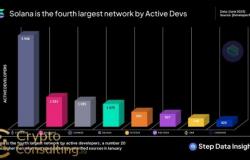Introduction
Multiple on-chain and technical indicators suggest the cryptocurrency market is entering a phase where altcoins—cryptocurrencies other than Bitcoin—are poised to outperform Bitcoin itself. This cyclical phenomenon, known as "altcoin season," historically occurs during late-stage bull markets when Bitcoin dominance declines and capital rotates into alternative assets seeking higher returns. Current data suggests this rotation may intensify through Q4 2025 and into early 2026.
Bitcoin Dominance Analysis
Declining Market Share: Bitcoin's market dominance fell from 56.8% in April 2025 to 51.2% in October 2025, marking a 5.6 percentage point decline over six months. Historical analysis shows altcoin seasons typically begin when Bitcoin dominance falls below 52% and accelerate as it approaches 42-45%.

Technical Breakdown: The Bitcoin dominance chart has formed a descending triangle pattern on weekly timeframes, with support at 50% representing a critical level. A decisive break below this threshold would likely trigger algorithmic selling of BTC positions in favor of altcoins, accelerating the rotation.
Stablecoin Flows: USDT and USDC exchange deposits increased 37% in September-October 2025 compared to the previous two months, suggesting investors are converting Bitcoin profits to stablecoins in preparation for altcoin deployment rather than exiting to fiat.
Altcoin Performance Metrics
The Altcoin Season Index, which tracks the 90-day performance of the top 50 altcoins versus Bitcoin, reached 68/100 in mid-October 2025. Readings above 75 indicate full altcoin season, suggesting the market is approaching this threshold. Key performance highlights include:
Layer-2 Tokens: Arbitrum (ARB) +89%, Optimism (OP) +76%, and Polygon (MATIC) +64% versus Bitcoin over 90 days, demonstrating strong relative strength as Ethereum scaling narratives gain traction.
Infrastructure Plays: Chainlink (LINK) +112%, Cosmos (ATOM) +58%, and Polkadot (DOT) +71% have significantly outperformed, reflecting institutional interest in blockchain infrastructure rather than purely speculative assets.
DeFi Resurgence: Uniswap (UNI) +82%, Aave (AAVE) +94%, and Curve (CRV) +67% have rallied as DeFi total value locked reached $142 billion in October 2025, up 185% year-over-year.
Capital Flow Patterns
On-chain analysis reveals systematic capital rotation consistent with historical altcoin season patterns:
Phase 1 (Completed): Bitcoin rally from $45,000 to $120,000+ established the bull market foundation (January-August 2025).
Phase 2 (Current): Large-cap altcoins (ETH, SOL, BNB, ADA) are outperforming Bitcoin by 15-40% over 60 days, indicating capital is flowing from Bitcoin to established alternatives.
Phase 3 (Projected): Mid-cap infrastructure and DeFi tokens are beginning to outperform, suggesting the rotation is entering its expansion phase where smaller-cap assets with strong fundamentals see explosive gains.
Exchange data shows Bitcoin withdrawal rates slowing from 22,000 BTC/week in August to 8,400 BTC/week in October, while altcoin withdrawal rates (self-custody) increased 67%, indicating accumulation behavior shifting toward alternative assets.
Ethereum's Critical Role
Ethereum's performance relative to Bitcoin serves as a bellwether for broader altcoin season. The ETH/BTC pair broke above 0.067 in September 2025, its highest level since April 2022. Historical data shows altcoin seasons intensify when ETH/BTC exceeds 0.065 and establishes this as support.
Ethereum's improving fundamentals support sustained outperformance: Layer-2 transaction volumes reached record highs, ETH supply on exchanges hit 14-year lows, and staking participation removed 28.4% of supply from liquid markets. These factors create supply constraints that amplify price movements when demand increases.
Sector-Specific Analysis
AI and Computing: Render (RNDR) +156%, Fetch.ai (FET) +143%, and Akash Network (AKT) +128% lead gains as decentralized AI infrastructure narratives gain momentum. This sector has attracted $2.1 billion in new capital during Q3 2025.
Gaming and Metaverse: Immutable X (IMX) +94%, The Sandbox (SAND) +78%, and Gala (GALA) +81% benefit from increasing NFT trading volumes and blockchain gaming adoption reaching 4.2 million daily active users.
Real-World Assets (RWA): Tokens representing tokenized securities, real estate, and commodities gained 45-87% as institutions explore blockchain-based asset tokenization, with total RWA market capitalization reaching $18 billion.
Risk Factors and Timing Considerations
While indicators favor altcoin outperformance, several risks warrant caution:
Late-Cycle Concerns: Altcoin seasons typically occur late in bull cycles, often preceding market corrections by 2-6 months. Current cycle duration (22 months from 2024 lows) suggests we may be approaching the mature phase.
Liquidity Concentration: 68% of altcoin gains are concentrated in the top 30 tokens by market cap, while mid and small-cap altcoins remain 70-85% below 2021 peaks, suggesting selective rather than broad-based outperformance.
Regulatory Uncertainty: Ongoing SEC enforcement actions and pending stablecoin legislation could trigger volatility that disproportionately affects altcoins lacking regulatory clarity.
Bitcoin Resurgence Risk: Major positive catalysts for Bitcoin (spot ETF expansion, corporate treasury adoption) could reverse capital flows, extending Bitcoin's dominance phase.
Strategic Implications for Investors
Current market structure suggests several strategic approaches:
Quality Over Speculation: Focus on altcoins with genuine utility, revenue generation, and strong developer activity rather than purely speculative assets. Infrastructure protocols with institutional adoption show superior risk-adjusted returns.
Staged Rotation: Deploy capital systematically as Bitcoin dominance confirms breakdown below 50%, rather than front-running the rotation prematurely.
Risk Management: Allocate larger portions to established large-cap altcoins (30-50% of altcoin allocation) with smaller positions in higher-risk mid-caps (15-25%) and speculative small-caps (5-10%).
Profit-Taking Discipline: Establish predetermined exit targets, as altcoin seasons typically feature rapid gains followed by equally sharp corrections. Historical altcoin seasons last 3-5 months on average.
Conclusion
Technical indicators, on-chain metrics, and capital flow patterns collectively suggest the cryptocurrency market is transitioning into a phase favorable for altcoin outperformance. Bitcoin dominance decline, increasing altcoin relative strength, and systematic capital rotation support this thesis. However, investors must remain cognizant that altcoin seasons represent late-cycle phenomena requiring disciplined profit-taking and risk management. The most sustainable gains will likely accrue to infrastructure protocols and established DeFi platforms with genuine utility rather than purely speculative assets. As Q4 2025 progresses, monitoring Bitcoin dominance levels, Ethereum relative strength, and sector-specific capital flows will provide critical signals for timing and allocation decisions.






